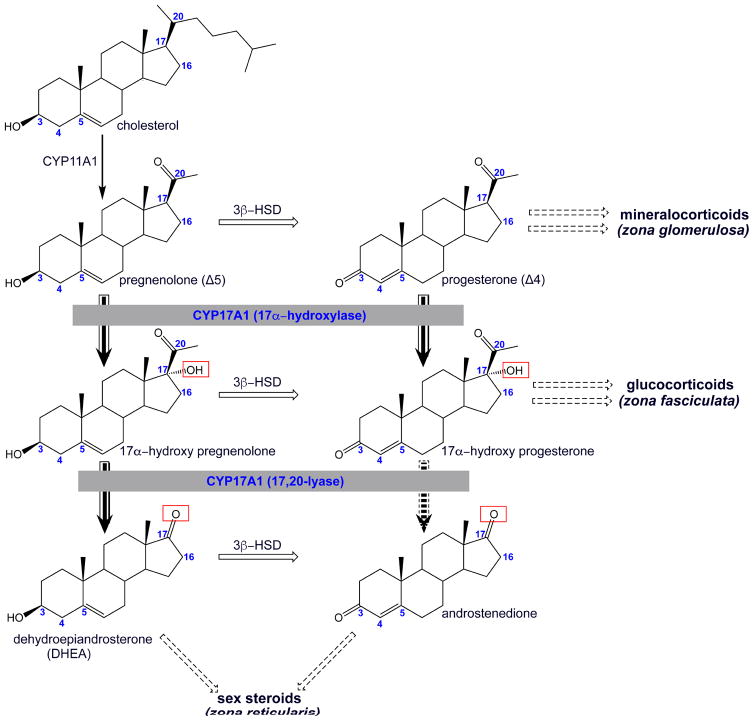Figure 1.
Schematic representation of the initial steps in the biosynthesis of steroid hormones highlighting the role of CYP17A1 (grey boxes) in adrenal steroidogenesis. CYP17A1 performs a hydroxylation reaction on the Δ5 pregnenolone and the Δ4 progesterone (solid arrow). The respective 17α-hydroxyl forms can either be converted into glucocorticoids in the zona fasciculate or undergo second round to catalysis by CYP17A1. In humans, this second, 17,20-lyase reaction primarily produces DHEA in the zona reticularis (solid arrow), while the lyase reaction producing androstenedione is very inefficient (broken arrow). Broken box arrows summarize subsequent enzymatic steps involving different enzymes in the production of steroid hormones. Relevant carbon numbering is shown on the steroid skeleton.

